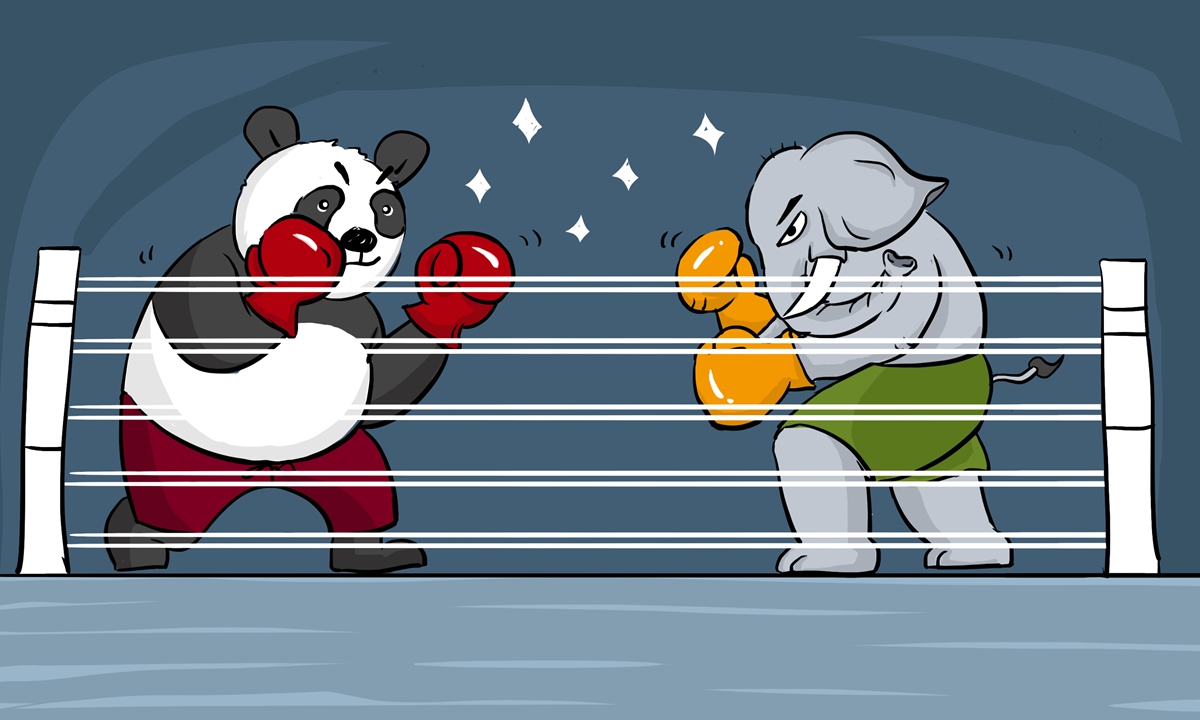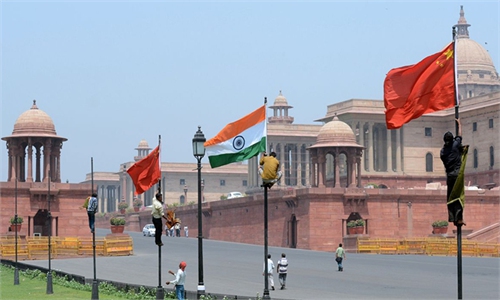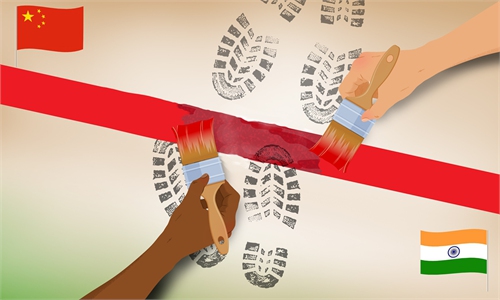
China India Photo: GT
Indian troops again illegally crossed the Line of Actual Control (LAC) into the Shenpao mountain region near the south bank of Pangong Tso Lake on Monday. They then outrageously fired warning shots at Chinese border patrol troops who came to negotiate, and Chinese border patrol troops were forced to take measures to stabilize the situation, a spokesperson of the Chinese People's Liberation Army (PLA) Western Theater Command said early Tuesday.
The spokesperson pointed out that the acts of the Indian army are of a very vile nature. China has demanded the Indian side to immediately withdraw its troops that illegal crossed the LAC and strictly investigate and deal with those who fired the provocative shots.
As is known to all, China-India border area has largely maintained peace for over 40 years. There were cases of military standoff, which didn't lead to serious military conflicts, because the two sides have conformed to an agreement not to use firearms in conflicts. Although the fierce physical clash in June caused casualties, neither side ever fired a shot at that time.
Are Indian troops' warning shots at Chinese soldiers a declaration of an annulment of the agreement? If so, then China and India should prepare for a new era of bloodshed along the border.
Indian side has recently behaved arrogantly over border issue. Moreover, public opinion in India shows no restraints. New Delhi, for instance, boasts that they have seized two commanding heights near the southern bank of Pangong Tso Lake, further claiming to have put Chinese troops within firing range. In addition, the Indian side has repeatedly threatened China and the two countries' overall diplomatic ties. Apparently, India believes that it has the initiative to make Beijing ask for a favor from New Delhi.
After the border clash with casualties in the Galwan Valley in June, under pressure of public opinion, the Indian government gave "complete freedom of action" to commanders deployed along the border. Indian Prime Minister Narendra Modi and Minister of Defense Rajnath Singh then visited the border area in July. Engulfed by nationalist pathos and strategic arrogance, India is eager to further provoke China.
We must warn India seriously: You have crossed the line! Your frontline troops have crossed the line! Your nationalist public opinion has crossed the line! Your policy toward China has crossed the line! You are over-confidently provoking the PLA and Chinese people - this is like doing a handstand on the edge of a cliff!
Nationalist forces in India should think twice that if the Chinese and Indian armies change their agreement of handling friction along the border area to prioritize the use of guns, then what's the use of them seizing two commanding heights on the south bank of Pangong Tso Lake? Does commanding heights make sense in modern military conflict? Between India and China, which country has more weapons, and which has a bigger military budget. Can't India count?
Sticking to the principle of not using firearms in border areas is the goodwill of the PLA and China. The move of the stronger side is only about whether it is rational, rather than whether it is weak. Indian nationalists, as a frog at the bottom of a well, need to make up lesson 101 on morality.
China doesn't want a border war with India. But if the Indian side misinterprets China's goodwill and intends to deter the PLA with warning shots, its moves will backfire. China will never concede for the sake of avoiding a war.
If India's frontline troops continue to fire shots recklessly, they must be prepared for the consequences of breaking the rule in the first place - they could be eliminated immediately in case of military conflicts.
China is trying hard to solve border disputes peacefully. But the PLA is clearly ready for any possible scenario. The peace-loving Chinese people will fully support the PLA's every move to safeguard national territorial integrity. We have shown extreme forbearance, but we will correct some Indian forces' misunderstanding of China's state will with practical actions.


